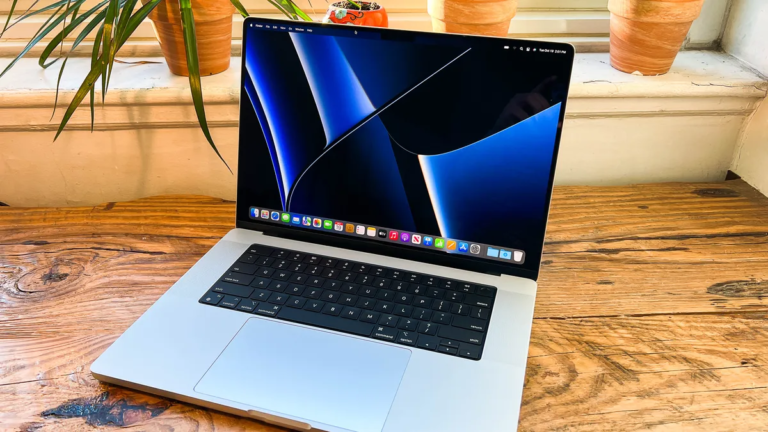Backing up your iPhone on a Mac is essential to protect your personal data, photos, contacts, and settings from loss. Whether you’re planning to upgrade your iPhone, troubleshoot software issues, or safeguard data against unexpected events, regular backups can save you time and frustration. This article will walk you through how to back up your iPhone on a Mac using different methods, including Finder, iTunes, and iCloud.
Why Backing Up Your iPhone on a Mac Matters
Backing up ensures you always have a copy of important data in case you lose your phone, encounter an error during a software update, or accidentally delete files. Mac backups allow you to restore your iPhone to its previous state or migrate everything seamlessly when you switch to a new device. With both local and cloud options available, you can choose the backup method that fits your needs.
Prerequisites Before You Begin
Before diving into the backup process, here are some things to prepare:
- Update macOS and iPhone Software: Ensure both your Mac and iPhone are running the latest versions. Some features may not work on outdated software.
- USB or Lightning Cable: For local backups, you’ll need a USB-to-Lightning or USB-C cable.
- iPhone Passcode: You may need to unlock your phone during the process.
- Free Storage on Mac/iCloud: Make sure there is enough storage on your Mac for a local backup or in iCloud if you choose the cloud backup method.
How to Backup iPhone on a Mac Using Finder
If you’re running macOS Catalina or later, Finder replaces iTunes for device management. Here’s how you can back up your iPhone on a Mac through Finder.
Step 1: Connect Your iPhone to Your Mac
- Use a Lightning or USB-C cable to connect your iPhone to your Mac.
- Unlock your iPhone if prompted, and tap Trust This Computer.
Step 2: Open Finder
- Open the Finder window from the dock or menu bar.
- In the left sidebar under Locations, you’ll see your iPhone listed. Click on it.
Step 3: Configure Backup Settings
- Under the General tab, you’ll see the backup options:
- Back up all of the data on your iPhone to this Mac: This option stores your iPhone’s full backup locally.
- Encrypt local backup: Select this if you want to protect your backup with a password. Encryption ensures that sensitive data like passwords and health data are included in the backup.
- Click Manage Backups to review existing backups and delete old ones if needed.
Step 4: Perform the Backup
- Click the Back Up Now button to begin the backup process.
- Wait for the progress bar to complete. Depending on your data size, it might take a few minutes.
Step 5: Verify the Backup
After the backup finishes, click Manage Backups to confirm that your iPhone’s backup appears with today’s date.
How to Backup iPhone on a Mac Using iTunes (macOS Mojave or Earlier)
If your Mac is running macOS Mojave or an earlier version, you’ll need to use iTunes to back up your iPhone. Here’s how:
Step 1: Connect Your iPhone
Use a cable to connect your iPhone to your Mac. Unlock your phone and select Trust This Computer if prompted.
Step 2: Open iTunes
Launch iTunes on your Mac. In the top-left corner of iTunes, click the iPhone icon when it appears.
Step 3: Set Backup Preferences
- Under Summary, you’ll find the backup settings. Choose:
- This computer to store the backup locally.
- Encrypt iPhone backup if you want to include sensitive data in your backup.
Step 4: Start the Backup
Click Back Up Now to start the backup process. Once complete, you can verify the backup by going to Preferences > Devices in iTunes.
How to Backup iPhone Using iCloud on a Mac
If you prefer not to use cables or store data locally, you can back up your iPhone to iCloud through your Mac.
Step 1: Check iCloud Storage
- On your iPhone, go to Settings > [Your Name] > iCloud > Manage Storage to ensure there’s enough space for your backup. If not, you may need to purchase additional storage.
Step 2: Enable iCloud Backup
- On your iPhone, go to Settings > [Your Name] > iCloud > iCloud Backup.
- Toggle iCloud Backup to On.
Step 3: Start the Backup from iPhone
- Connect your iPhone to Wi-Fi and plug it into a charger.
- Tap Back Up Now to create a fresh backup on iCloud.
Step 4: Manage iCloud Backups from Mac
- On your Mac, open System Preferences > Apple ID > iCloud.
- Click Manage to view your iPhone backups and delete old ones if needed.
How to Automate Backups Using Wi-Fi Sync
With Wi-Fi Sync, you can back up your iPhone to your Mac automatically whenever both devices are on the same Wi-Fi network.
Step 1: Enable Wi-Fi Sync
- Connect your iPhone to your Mac via cable.
- Open Finder or iTunes (depending on your macOS version).
- In the device summary section, select Show this iPhone when on Wi-Fi.
- Click Apply to save your settings.
Step 2: Ensure Automatic Backups
- When your iPhone and Mac are connected to the same network, Finder or iTunes will automatically back up your data during idle periods.
Troubleshooting Backup Issues
1. iPhone Not Showing Up in Finder/iTunes
- Check the cable and USB port for issues.
- Restart both your iPhone and Mac.
- Update macOS and iPhone software.
2. Not Enough Storage on Mac or iCloud
- Delete old backups or unused files to free up space.
- Use external storage for local backups.
- Upgrade your iCloud storage plan if needed.
3. Backup Stuck or Failed
- Restart both devices and try again.
- Ensure a stable internet connection for iCloud backups.
- Disable security software temporarily if it’s interfering with the backup process.
Choosing Between iCloud and Local Backups
Both iCloud and local backups have their pros and cons. Local backups are faster and don’t require internet, but they consume storage on your Mac. On the other hand, iCloud backups offer convenience and accessibility from anywhere but may require a storage upgrade. Ideally, you can use both methods for a more comprehensive backup strategy.
Restoring from a Backup
In case you need to restore your iPhone from a backup, connect your iPhone to the Mac. Open Finder or iTunes, select Restore Backup and choose the most recent backup file. This process will replace the data on your iPhone with the contents of the backup.
Conclusion
Backing up your iPhone on a Mac is an essential step to protect your data and ensure a smooth experience, especially during updates or device upgrades. Whether you prefer using Finder, iTunes, or iCloud, the key is to back up your data regularly. With these methods in place, you can rest easy knowing that your personal information is safe, and restoring your iPhone will be quick and hassle-free whenever needed.



